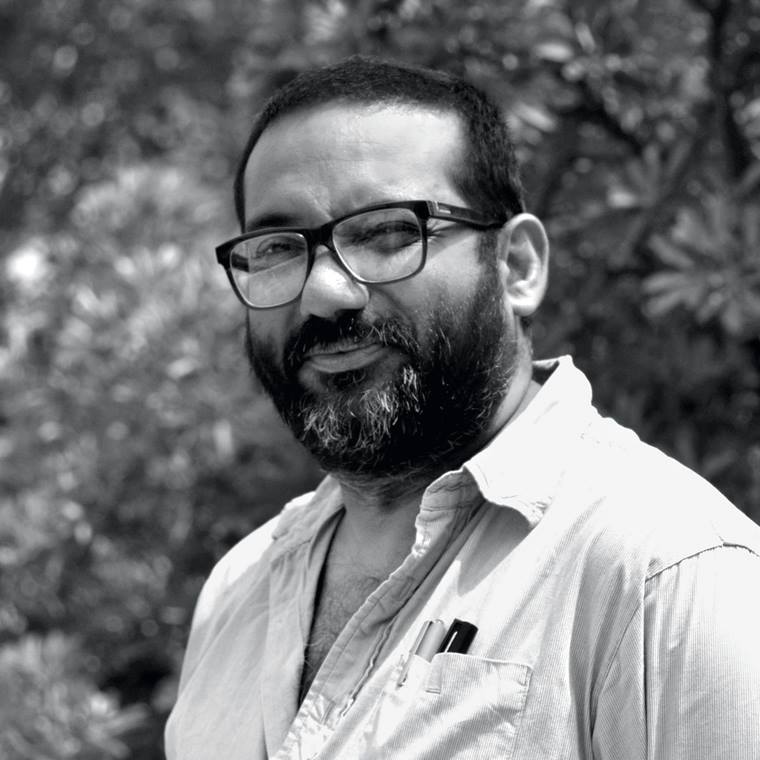Ramkinkar Baij was one of the pioneers of modern Indian sculpture and a very important figure of Contextual Modernism. He is considered as “Father of Modern Indian Sculpture”. He began his journey in art at a very young age. He use to copy local idol makers; sketching, making idols, and drawings were some of the few most important things he was doing in his free time.
Ramkinkar Baij was born in an economically modest family in the Bankura district of the modern state of West Bengal in India. A lot of his creations are inspired by the life of rural Adivasi people.
He used to paint portraits of Indian freedom fighters involved in the Non-cooperation Movement against the British Raj. At age of 16, he was recognized by Ramananda Chatterjee. Four years later he joined the Visva-Bharati University at Santiniketan.

Life and works
Baij’s talent and prodigious attracted the people especially the nationalists with whom he was associated the most. In 1925, on the advice of Ramanand Chatterjee, Baij paved his way to the Shantiniketan where his extraordinary talent was shaped under the Nandalal Bose and Rabindranath Tagore. When he completed his study, he has acquired a new depth and complexity in his works, his skills became more precise, and his intellectual horizons expanded.
Ramkinker created many monumental public sculptures initiated by entirely him. In the early, 1930s he started to fill the campus with his sculptures one after the other. His sculptures were innovative in the subject and personal in style.
In 1938, he created one of the most important sculptures of his life “The Santhal Family”. In this sculpture, he represented the tribal peasants, which was iconic at that time because most sculptures are made for public figures, rulers, or gods. He used cement and laterite mortar to model the figures. He used the modern theme from western and Indian pre-classical sculptural values. This amalgam helped him to establish himself as a Modern Indian sculptor.
Soon, he became the member of its faculty and along with Benode Behari Mukherjee and Nandalal Bose made the Shantiniketan the most important center for modern art in pre-independence India.
Ramkinkar was an introverted and otherworldly person but it doesn’t stop him from getting recognized in the national and international communities. His outstanding works were admired by many government and non-government organizations and art galleries.
He was invited to participate in Salon des Salon des Réalités Nouvelles and Salon de Mai in 1950 and 1951 respectively. In 1970, the Government of India honored him with Padma Bhushan. He became a fellow of Lali Kala Akademi in 1976 and in the same year he was conferred the Desikottama by Visva Bharati.
Creating Yaksha-Yakshi at Reserve bank of India
After India’s independence, Jawaharlal Nehru suggested that public buildings could be utilized to encourage Indian artists. A committee was created to perform the selection of artists. Committee recommended that sculptures should be installed on either side of the main entrance of the RBI office in New Delhi.
Invitation to create Yaksha and Yakshi was sent to the nine artists and out of those nine artists only five submitted their proposals and only one submitted models and sketches. Ramkinkar Baij’s proposal was accepted and he created the sculptures.
Legacy
Ritwik Ghatak made a documentary on the Ramkinkar Baij named “Ramkinkar”. Art historian professor R. Shiva Kumar written a scholarly book on Baij. This book is believed to be one of the most comprehensive on the life of Ramkinkar. On 24 Jan. 2013, Ramkinkar Baij Memorial Lecture was delivered by K.G. Subramanyan one of the students of Baij.

Vikash Kalra is a self-taught artist and writer based in New Delhi whose work has been exhibited across India and is held in several private and corporate collections.